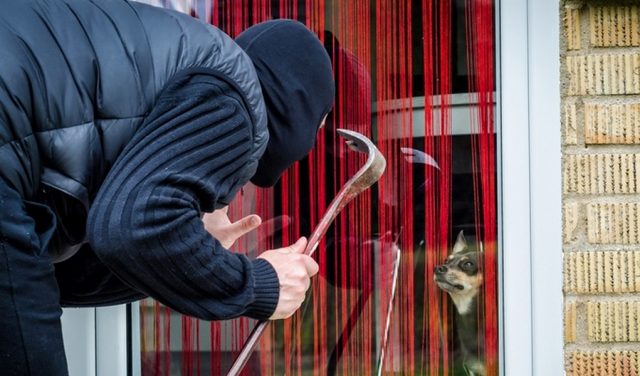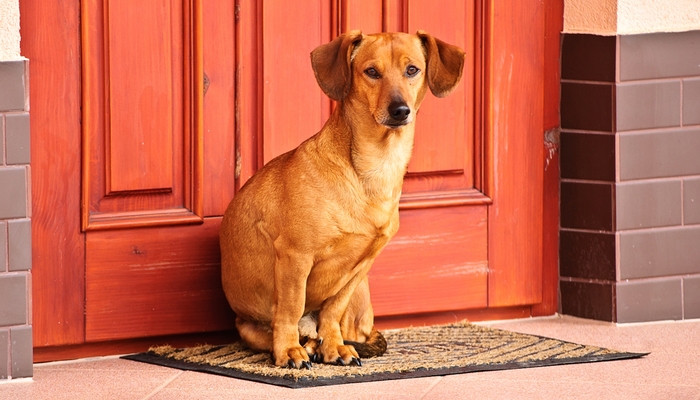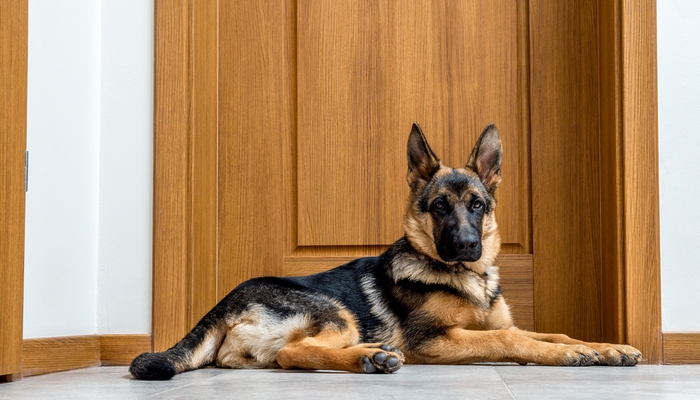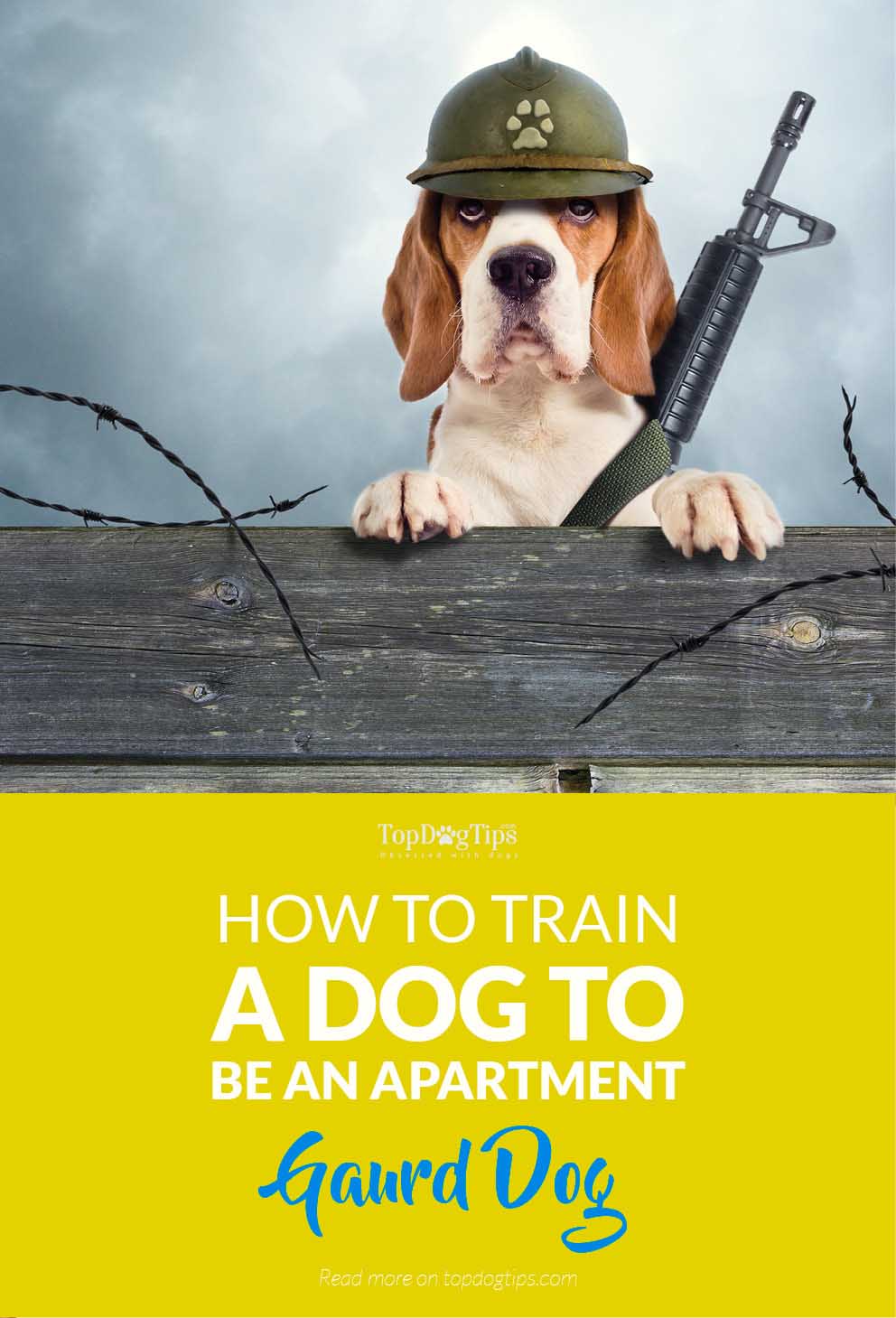
When most people go out to get a dog for themselves, their biggest requirement is a companion they can live with and a protector they can rely on. And while most dogs have it in their wiring to be protective, some dog breeds do not use this trait well without prior training.
If you intend to use a dog as a guard for your apartment, you must know that he should be trained as a guard dog first. Dogs can either be attack dogs or guard dogs, depending on how they are trained, which is how police dogs are being recruited.
Attack dogs are, in the most literal sense, trained to attack anyone or anything they deem suspicious. That tends to cover a lot of people and objects, which makes the dog's actions a tad hazardous. He will only associate with his handler and can be friends with only them, making dogs trained this way potentially dangerous to have in public.
Not only that, but this makes attack dogs less functional as pets as well and renders guard dogs to be much better alternatives instead. But even guard dogs need to be trained for their role, especially if it’s as complex as guarding an apartment. And if you adopt a dog breed that can be a good apartment guard dog, you're one step ahead.
READ MORE: 14 Best Watch Dogs & Breeds That Are Good Guard Dogs
How To Train A Dog To Be An Apartment Guard Dog and Protect Your Home
To train a canine effectively to become an apartment guard dog, careful planning and a good dog training strategy will be essential. The things that a good guard dog has to learn include (besides the basics): identifying strangers from family members and friends, barking on command, barking at the arrival of someone and barking without biting.
Without training, a guard dog can also pose a danger and trouble in the form of biting and loud noises, especially if he bites immediately and barks incessantly. An untrained dog can also fail to bark when he sees intruders, rendering him useless as a guard dog.
Please note that, unlike the basics of dog training, guard dog training requires a lot more skill and understanding of how to do this properly. Ideally, you want either a professional to do this, have a professional dog trainer by the side, or, at the very least, consult with a professional dog trainer who can give you advice with regard to your specific canine.
Remember that training dogs for fighting or similar reasons is illegal. Training your dog to become a guard dog is different from making him into an aggressive animal for no apparent reason, which is unethical at the least and does a disservice to the majority of dogs and their owners around the world. Stay safe, and be careful and responsible.
RELATED: How Fighting Dogs Are Trained – The Grim Reality
The First Step in Training a Guard Dog
First, guard dog training is done in stages, starting from the dog’s infancy because that’s when he grasps concepts the fastest. You'll want to work on the following concepts:
Socializing
Socializing is necessary to introduce the dog to humans and other dogs. It greatly determines his relationship with others and dictates whether or not a dog can live with people, which is the first and most important aspect of any pet, not just guard dogs.
Teaching general commands
These are the most basic dog training commands that are commonly taught in canine obedience classes and will be the foundation for your pet. The four most essential and popular basic commands include these:
- Come
- Sit
- Stay
- Recall command (come when his name is called)
They are essential for teaching any other tricks and enabling compatibility with humans.
For more information on command training, you can read our thorough guide on the basics of dog training or watch the below video for more tips and ideas.
Training a Dog to Attack on Command
You may not like the idea of training your dog how to attack, but it is necessary to improve his ability to identify strangers and choose whether or not to attack them. This cannot be left up to the dog to decide, which is why he must understand that only upon command can he attack. Here are a few steps to follow while attack training dogs.
Step 1
 Ensure that you are fully protected. Wear a protective glove, such as this one, that covers your whole arm before working with the dog. Knowing that this is a dog training procedure that your pet might not understand at first, it holds a potential risk of danger to you. You must be well-protected to prevent possible injuries.
Ensure that you are fully protected. Wear a protective glove, such as this one, that covers your whole arm before working with the dog. Knowing that this is a dog training procedure that your pet might not understand at first, it holds a potential risk of danger to you. You must be well-protected to prevent possible injuries.
Step 2.
Command the dog to sit down. This will work best if you have previously taken the dog through the dog obedience classes mentioned above and taught him to sit, stand, and come on command. If you haven't done so, it is necessary to teach him those commands first because they are the foundation on which the attack command is developed.
Step 3.
After sitting the dog down, start tapping him continuously in the face with the glove on your arm. This action irritates the dog and is supposed to make him angry over time. Continue tapping him in the face until he attacks the glove in anger. This is one of the most common ways how police dogs and K9 units are trained in the academy.
Step 4.
As soon as the dog attacks the glove, say the word “attack” loudly. Your choice of words is very important, too. “Attack,” in this case, is meant to teach the dog what attacking means and how it's done. That is why you say it loudly whenever the dog barks at the glove. You can use any other word, too; just stay consistent with your command training.
This is what it looks like:
Step 5.
Throughout the attack dog training process, endeavor to reward your canine with a dog treat every time he does something right. While not all do when it comes to this type of training, most dogs are greatly motivated by praise in the form of food treats. Use the treat only when you acknowledge that the dog's learned something new.
Step 6.
Repeat steps 3 – 5 until you are sure and it is evident that your dog has understood the meaning of your choice of word, in this case, “attack.” To know if he has, stand a distance away from him and then command him using the word.
See if he quickly responds by jumping to attack your gloved hand. If he doesn't, more training in the form of 3-5 repetitions of the same command is required. If he does, you are free to move on to the next step.
Step 7.
Following all the dog training rules and regulations, give your dog a treat to reward him for having learned that new command. Take this opportunity to give your dog a rest for a while as well, socialize with him, and praise him for a job well done.
Step 8.
To be completely certain that he hasn't forgotten the command after the break, endeavor to repeat steps 6 and 7 five to seven times more. This is important for determining how quickly your dog understands and grasps commands. Most of this will depend on the type of breed you're training, and some dogs are smarter or easier to train than others.
Step 9.
The next step is to show your dog how to use the “attack” command on an actual intruder instead of your gloved arm. This part requires the use of a very big doll or a human-like figure that can be positioned as an intruder at a distance. For K9 training units, they are usually actual people who are trained to do this. Obviously, don't try this yourself.
After having the dog ready and the big doll placed, point towards the “fake” intruder and shout, “Attack.” The dog may come toward your hand on the first try but will soon identify where you are pointing and attack there instead. Rinse and repeat.
Step 10.
After learning the “attack” command when directed at another person, treat your dog to another dog training treat and praise him. You must remember to do this immediately after practice to enable him to understand how good learning the new command is.
Step 11.
Go to step 9 again, placing your fake intruder at various entry points to the apartment and in different rooms. Repeat the “attack” command each time you change location and see if the dog follows promptly. Ensure that he doesn't react when there's no command.
Once mastered, you can be assured that your dog will now attack anyone on your command and stay calm when you do not give any orders.
Step 12.
The next step is to have someone act like a real intruder. The best option is to use someone whose face is not familiar to the dog. Have the person stand by the entrance to the apartment and remind them to be alert and shut the door if the dog lunges at them.
Then point towards the “intruder” and command your dog to attack. If Fido runs towards the intruder, then he has gotten your message.
Step 13.
This next and last step is crucial for controlling the dog. It is necessary to train him to stop an attack midway, especially in cases of ill judgment. Another obedience command that comes into play here is the “stop” command.
Go through steps 9-12 again, but shout the word “stop” this time as the dog goes toward the intruder. If he already knows the stop command, he will stop his attack at once. If you haven't taken the dog through the “stop” command, do it immediately.
You're done. The process and strategy itself are simple, but the key is tuning into your dog and learning with him. Consistency and patience are big factors here as well.
RELATED: 30 Breeds That Are Good House Dogs & Perfect for Families
Test Your Dog’s Judgement
A good apartment guard dog must be able to identify family members and friends and determine to a slight extent which visitor is an intruder or not. Since dogs do not speak or learn names, the best way to test their judgment is by using actual faces.
To determine the dog's ability to identify people, put two individuals in a dark room – one should be a stranger, the other a regular at the apartment. Have them both call out the dog's name and see to whom Fido will go. Most dogs tend to shy away from strangers.
Always remember to practice safety and caution. Dogs are animals, after all, and if you have approached the type of training that raises aggression in your dog, you need to be particularly careful about how they act in public and around people. Use common sense.
RELATED: 25 Best Dog Breeds for Small Apartments
Additional tips for training your guard dog
The last few things I'd like to mention are chosen signal words that are uncommon, which prevents intruders, burglars, and attackers from using them as well. Avoid common terms such as ‘shhh' and opt for unique terms that only you and close family friends will understand. Besides, in dog training, any word can mean ‘attack' or ‘stop.'
Ultimately, I would suggest consulting with a professional about training a dog to be an apartment guard and what this entails. Try to enroll your canine for expert professional training if you want to train him to become an attack dog instead of doing it yourself. Professionals are better equipped to train certain commands that only attack dogs can do.
Finally, regularly take a walk with the dog around your neighborhood to familiarize him with the environment, people, and sounds (preferably daily). This prevents him from barking at anything without reason. It is also necessary for the dog's socializing.
READ NEXT: Dog Muzzles Aren't Just for Aggression















